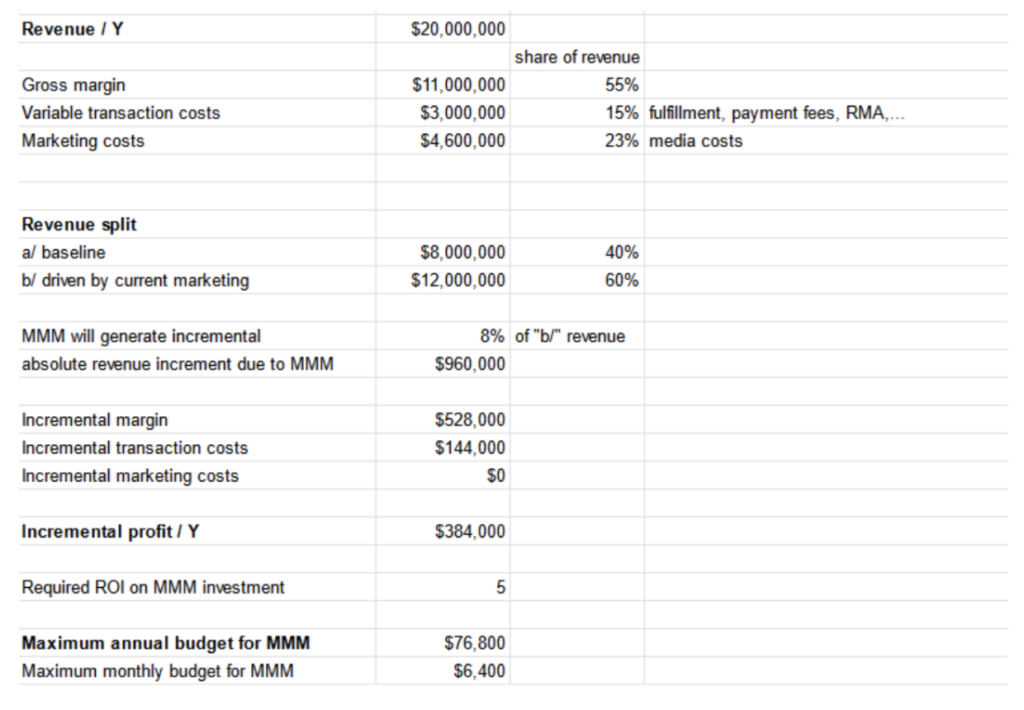Despite significant progress in automation and democratisation of MMM over the last circa 5-6 years, successful MMM projects are still quite complex and require considerable investment regardless whether you procure it completely from an external party or build it yourself.
A successful MMM project/initiative has several components, some of the most important being:
You will need reliable input data and a model to start with. While the initial model most likely won't be perfect and it will evolve over time, it still needs to be good enough - if its results are unrealistic or it gets some important channels wrong, you may easily lose the trust of other stakeholders in the organization.
01Often overlooked by internal teams trying to build an inhouse MMM. MMM should be viewed as an iterative process, not a one-time model creation exercise. It is very likely that your model will evolve and improve over time.
02Especially with larger organisations it will be necessary to spend time and effort on explaining the model, its results, assumptions and mechanics to other teams (commercial, finance etc) in your company before it can be used in practice to change and optimize budgets.
03I.e. making changes (or call it optimization experiments) and gradually incorporating MMM into your planning, reporting and performance review processes and systems.Depending on your organisation complexity, this can be easy or it can be a major change management exercise taking multiple months.
04All in all you should not expect MMM to be a “quick win” – getting real value out of it will realistically take a few months for most organisations and will require active involvement and resources on your part.
After 1 year of actively using MMM for optimization, advertisers usually see a 5-25% improvement on their overall media ROI. In any specific case the overall uplift depends e.g. on
It is also important to understand that MMM optimization will impact your overall media/marketing ROI, it will not directly affect your baseline sales in the short term (long term is another story). Of course without MMM you don’t know what your baseline sales is to start with but as a general heuristic you can use that
Technically there is no minimum size (of revenue or media spend) for MMM to work but in some cases the potential relative improvement just isn’t worth the effort and complexity.
Our experience is that at around 1.5-2m USD of annual marketing spend, MMM starts to make sense – both in terms of potential business results uplift and the ability of the company to absorb and use the results. If you are currently spending significantly less, it may be totally sufficient to use attribution models and incrementality testing.
Another factor is how structured marketing mix you have. Take these 2 examples:
In this case both companies have substantial marketing spend but Company A is a much better fit for MMM – there are many more “levers” in how they can structure their media mix and budgets across various channels + added value in MMM from understanding how advertising also impacts their sales on various marketplaces, not just their website..
Typically if you have several (at least 5-6) media channels (here channel may also be a campaign type, eg Google Ads Pmax can be considered a channel, not just Google Ads as a whole) that you can actively manage then it is a good indication that MMM may be useful for you.
If you have to actively generate awareness and demand for your product/service, then it is also a good indicator for MMM being useful for your brand.
Additionally if you have multiple sales channels – your website/app, marketplaces, own retail stores or you sell via other retail partners – then MMM can help you understand the impact of advertising across all these sales channels.
MMM is also very good at mitigating tracking problems – either missing consents or issues with traffic from channels like Facebook, Tiktok. So if it is difficult for you to measure marketing also for these reasons, MMM may be a good fit.
Examples of industries typically well-suited for MMM:
This list is not exhaustive – many other industries can use MMM, generally if marketing/advertising & demand generation plays a big role in your business, it is a strong indicator that MMM may be useful for you.On the other hand here are some examples where MMM may be quite challenging or not a good fit:
Based on our experience there additional factors that can greatly increase the chances of success with MMM:
Being open-minded and ready to challenge previous beliefs – it is quite possible that MMM results will show quite different results than what you were used to from Google Analytics or some attribution model solution.
Let’s explore an illustrative example business case for a DTC ecommerce company:
